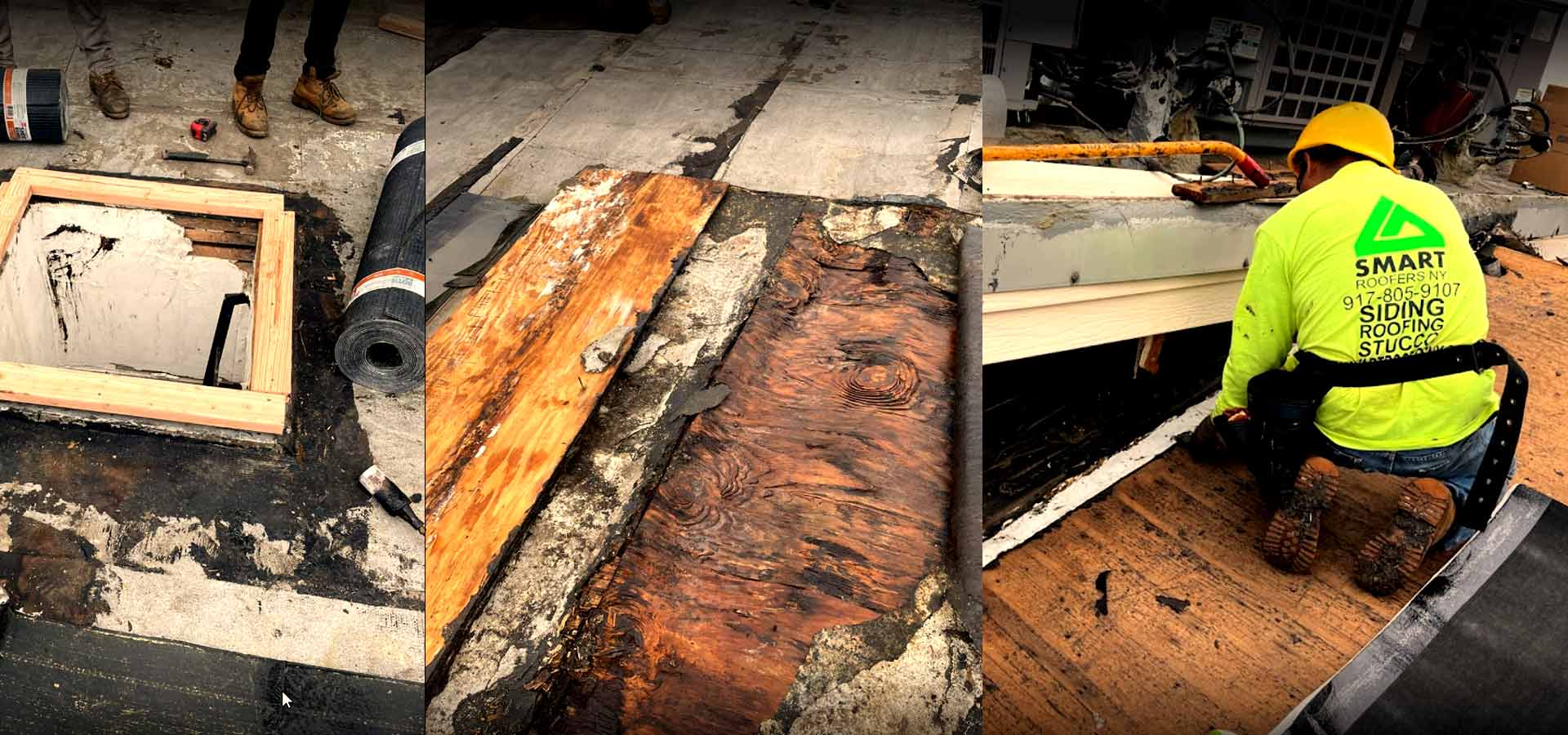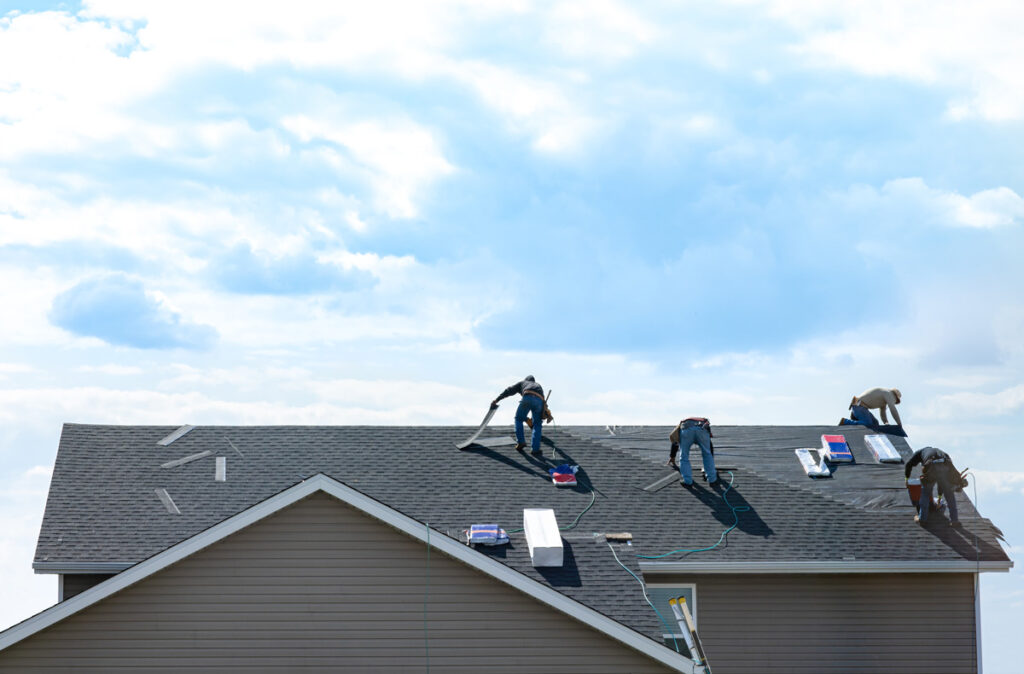Understanding the Different Kinds Of Roofings: A Comprehensive Overview for Homeowners
With a variety of choices-- varying from the standard gable to the modern flat-- each kind presents distinct advantages and challenges that must align with the house owner's specific demands and environmental factors to consider. As we explore the complexities of various roofing kinds, it ends up being apparent that one size does not fit all; the appropriate option may shock you.
Saddleback Roof
Gable roofs, characterized by their triangular form, are amongst the most preferred roofing styles because of their simpleness and efficiency in losing water and snow. This style features two sloping sides that satisfy at a ridge, permitting for efficient drain and lessening the danger of water accumulation. The high pitch commonly related to gable roofs enhances their capability to handle hefty rainfall, making them suitable for various climates.
Along with their sensible benefits, gable roofings provide visual versatility. They can be adjusted to various building styles, from standard to contemporary homes. The design can likewise accommodate added features such as dormer windows, which enhance natural light and air flow in the attic room room.
Furthermore, gable roofing systems supply enough area for insulation, adding to power effectiveness. Home owners can pick from a variety of roofing materials, consisting of asphalt roof shingles, metal, and ceramic tiles, further enhancing customization choices.
Regardless of their benefits, saddleback roofs may need added support in areas susceptible to high winds or hefty snowfall. Overall, the gable roof stays a preferred selection due to its blend of performance, longevity, and aesthetic appeal.
Apartment Roofs
Flat roofs are frequently recognized for their minimalist style and functional applications, particularly in commercial and business setups (oahu roofing). These roofs include a horizontal or almost horizontal surface area, which enables simple building and versatile room usage. While they might do not have the aesthetic appeal of angled roofs, level roofs supply many benefits, specifically in urban atmospheres where making the most of area is important
One of the primary benefits of level roofings is their availability. Property owners can utilize the roof room for various objectives, such as roof gardens, balconies, or solar panel installments. Additionally, level roof coverings are usually a lot more cost-efficient to maintain and set up compared to their sloped counterparts, as they require less materials and labor.
Common materials used for flat roofings include built-up roofing (BUR), customized bitumen, and single-ply membranes, each offering distinctive advantages. In general, flat roof coverings offer as a adaptable and functional selection for many property owners and companies alike.
Hip Roof Coverings
Hip roofing systems are characterized by their sloped sides that converge at the top, developing a ridge. This design stands out from gable roof coverings, as all 4 sides of a hip roofing system incline downwards towards the walls, providing a more secure structure. The angle of the slopes can differ, permitting versatility in building looks and functionality.
Among the main advantages of hip roofs is their capacity to stand up to heavy winds and damaging weather problems. The sloped surface areas enable much better water drainage, minimizing the threat of leaks and water damages. Furthermore, hip roofs provide boosted attic area, which can be utilized for storage space and even converted into livable areas.
However, building a hip roofing system can be more expensive and intricate than simpler roofing system types, such as gable roof coverings. The additional product and labor associated with producing the slopes and making sure proper architectural integrity can lead to higher expenses. In spite of these disadvantages, lots of home owners favor hip roofing systems for their durability, visual charm, and capacity for power effectiveness.
Mansard Roofs
Mansard roofs, frequently acknowledged by their unique four-sided design, function 2 inclines on each side, with the lower incline being steeper than the top. This building design, click over here now stemming from France in the 17th century, is not just aesthetically appealing however useful, as it optimizes the useful room in the top floorings of a building. The steep reduced slope enables for more headroom, making it an optimal selection for attics or lofts, which can be exchanged living rooms.
Mansard roof coverings are identified by their convenience, suiting different architectural styles, from typical to modern. They can be built with different materials, including asphalt shingles, slate, or metal, giving house owners with a series of options to match their budgets and choices. In addition, the style allows for the assimilation of dormer windows, enhancing natural light and air flow in the upper degrees.
Nevertheless, it is vital to consider the possible drawbacks. Mansard roof coverings may require more maintenance as a result of the intricacy of their style, and their high slopes can be challenging for snow and rain drainage. Overall, mansard roofing systems integrate beauty with practicality, making them a prominent option amongst house owners seeking unique architectural attributes.
Lost Roof Coverings
As home owners significantly seek simpleness and functionality in their architectural layouts, dropped roofings have become a popular choice. Defined by a single sloping plane, a shed roof offers a minimalist visual that official site complements different home styles, from modern to rustic.
One of the primary advantages of a shed roofing system is its straightforward construction, which typically equates to reduce labor and material prices. This layout permits for efficient water drainage, minimizing the danger of leakages and water damages. In addition, the vertical incline gives enough area for skylights, boosting all-natural light within the interior.
Shed roofing systems additionally use adaptability in regards to usage. They can be successfully incorporated into enhancements, garages, or exterior frameworks like sheds and structures. Moreover, this roof style can accommodate numerous roof covering products, consisting of metal, asphalt roof shingles, or also eco-friendly roof coverings, aligning with eco-friendly initiatives.
Nonetheless, it is important to take into consideration local environment problems, as hefty snow tons might demand modifications to the roof's angle or framework. In general, lost roofs offer a sensible and cosmetically pleasing option for property owners seeking to take full advantage of performance without compromising style.
Final Thought


Gable roof coverings, identified by their triangular shape, are among the best site most popular roof styles due to their simpleness and performance in losing water and snow. oahu roofing. The steep pitch generally linked with gable roofings enhances their ability to take care of hefty precipitation, making them ideal for various environments
While they may lack the visual charm of pitched roofings, flat roofing systems use numerous benefits, particularly in city environments where making the most of room is crucial.
